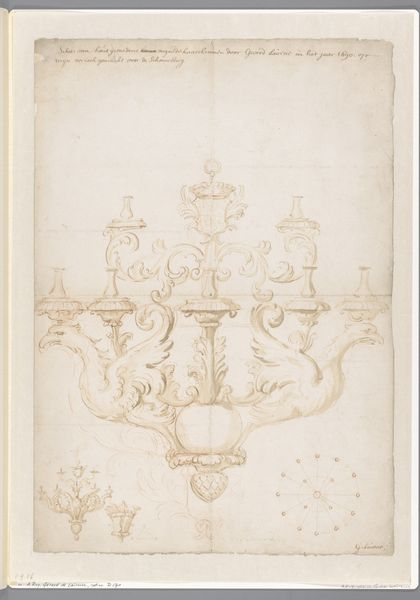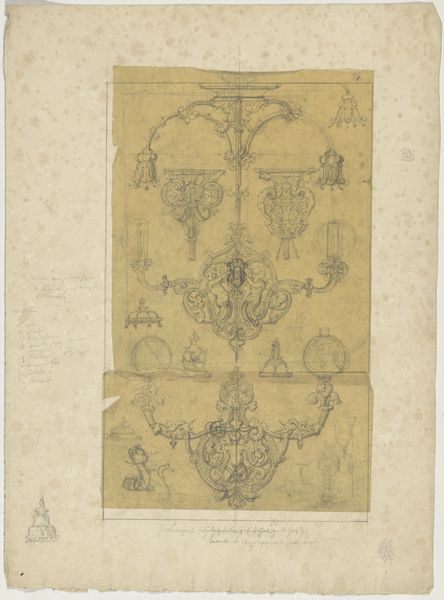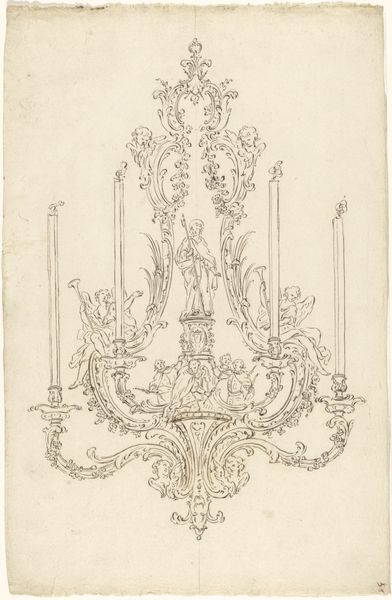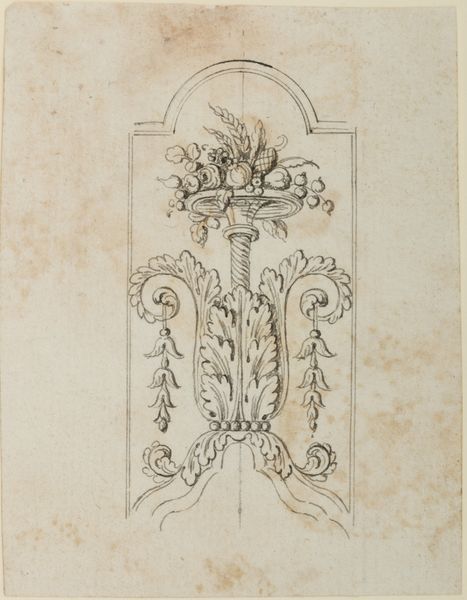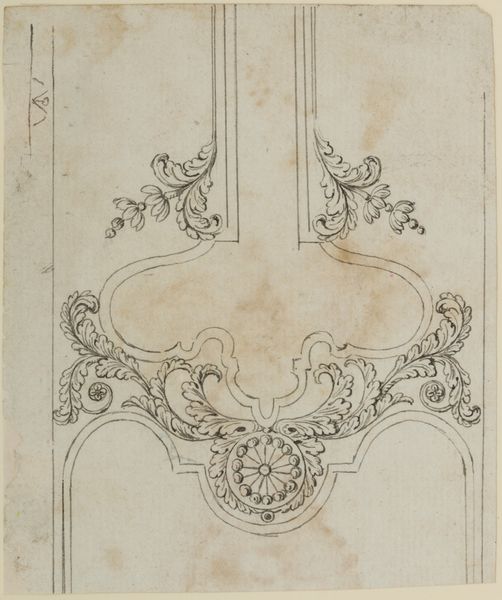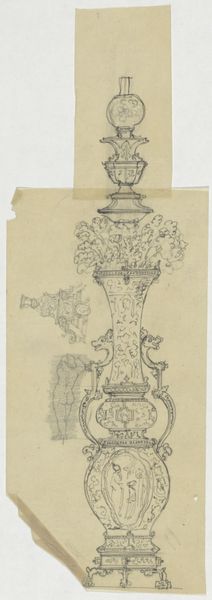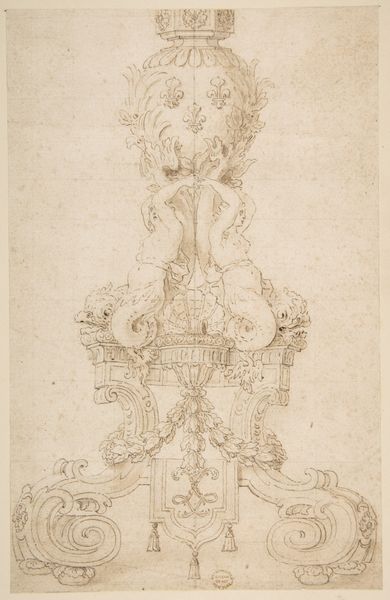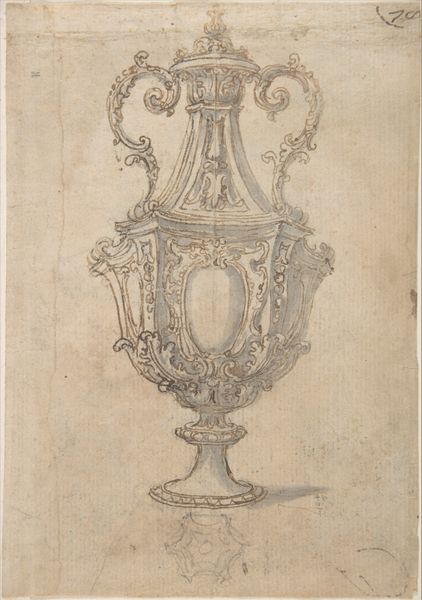
drawing, watercolor
#
drawing
#
neoclacissism
#
aged paper
#
toned paper
#
sketch book
#
incomplete sketchy
#
personal sketchbook
#
watercolor
#
sketchbook drawing
#
watercolour bleed
#
watercolour illustration
#
decorative-art
#
sketchbook art
#
watercolor
Dimensions: height 1435 mm, width 1024 mm
Copyright: Rijks Museum: Open Domain
Editor: Here we have "Ontwerp voor een kandelaber met glazen coupes en kappen," a design for a candelabra with glass cups and shades, dating from around 1850 to 1860, by Charles-Nicolas Odiot. It’s a watercolor and drawing on toned paper, giving it a lovely antique feel. It reminds me of something you’d see in a grand European palace. What stands out to you in this design? Curator: The design reveals a lot about the socio-cultural values placed on luxury and display during the mid-19th century. Objects like this candelabra weren’t merely functional; they were potent symbols of wealth, status, and taste. This design, reminiscent of Neoclassicism, demonstrates the staying power of this visual language in the decorative arts even past its peak. Considering Odiot's clientele, predominantly European royalty and aristocracy, how do you think the design serves to reinforce existing power structures? Editor: That's interesting. The Neoclassical style with its symmetry and ornamentation feels like it's declaring a kind of timeless elegance, almost setting itself apart from the changing times. It does seem geared towards reinforcing a sense of established order, especially with the very wealthy displaying them in their homes. But I wonder, did these objects play a role in shaping social aspirations beyond the elite circles? Curator: Absolutely. The circulation of imagery – through prints, exhibitions, and even design drawings like this – democratized, to some degree, access to these visual symbols. Even if one couldn't afford a solid silver candelabra, the aspirational value trickled down, influencing middle-class tastes and fueling consumerism. How might this impact the production of similar, but perhaps less opulent, objects available to the general public? Editor: So, the grand candelabra inspires simpler, more accessible designs. It's like the fashion industry today. That’s something I hadn't really considered. It reveals so much more than just the design of a pretty object! Curator: Exactly! Studying objects like these allows us to examine the complex interplay between art, power, and society during the period. I'm glad you appreciate the deeper significance beyond the aesthetic value of the work!
Comments
No comments
Be the first to comment and join the conversation on the ultimate creative platform.
